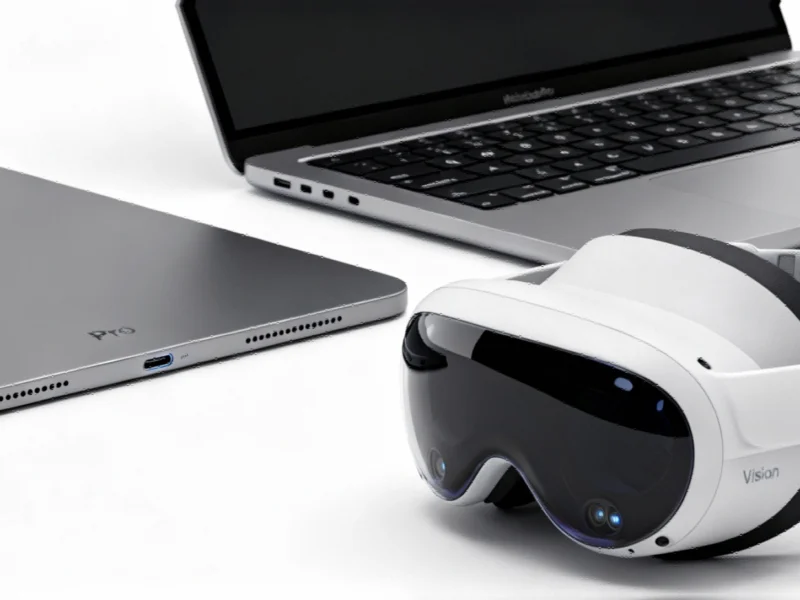The Philosophy Behind Apple’s M5 Refresh
In an industry obsessed with revolutionary changes and flashy announcements, Apple’s latest M5-powered devices represent a refreshing departure from the norm. Rather than chasing headline-grabbing transformations, Apple has focused on meaningful refinements that address real user pain points. This strategic approach demonstrates a mature understanding of what truly matters to consumers: reliable performance, enhanced comfort, and practical improvements that make daily computing experiences smoother and more efficient.
As recent industry analysis confirms, Apple’s emphasis on practical upgrades over dramatic redesigns reflects a broader trend in personal computing. The company appears to be listening to user feedback and addressing the subtle frustrations that accumulate over time with previous-generation devices.
iPad Pro: Subtle Enhancements with Significant Impact
The M5 iPad Pro maintains the same elegant design that made its predecessor so appealing, but beneath the familiar exterior lies a host of meaningful improvements. The increased RAM capacity from 8GB to 12GB in the base model represents a substantial boost for multitasking workflows, particularly when using Stage Manager with external displays. This enhancement aligns perfectly with Apple’s vision of the iPad as a legitimate productivity tool rather than just a consumption device.
Perhaps more importantly, the charging capabilities have seen a notable upgrade. With support for 60W or higher chargers, the iPad Pro can now reach 50% battery in just 35 minutes. For professionals who rely on their devices throughout the day, this reduction in downtime is more valuable than any cosmetic change. The shift to Wi-Fi 7 and Bluetooth 6 protocols further ensures that connectivity keeps pace with the device’s processing power.
The inclusion of Apple’s in-house C1X modem and N1 wireless chip, while understated in marketing materials, enables Thread networking technology support. This positions the iPad Pro as a potential smart home hub, capable of communicating with and controlling compatible smart home devices. This strategic addition demonstrates how Apple is thinking about ecosystem integration beyond the obvious use cases.
MacBook Pro: Performance Where It Matters
The M5 MacBook Pro continues Apple’s tradition of refining an already excellent formula. While the external design remains unchanged, the internal upgrades deliver tangible benefits for professional users. The enhanced memory bandwidth of 153 Gbps (up from 120 Gbps) and faster SSD storage represent significant quality-of-life improvements that users will appreciate during demanding workflows.
Apple’s focus on AI capabilities through neural accelerators attached to each graphics core reflects the company’s preparation for an AI-driven computing future. These enhancements aren’t just for specialized applications—they’ll benefit everything from creative software to everyday productivity tools that increasingly incorporate AI features. The storage improvements are particularly noteworthy, as the baseline model now receives the faster SSD modules previously reserved for higher-tier configurations.
These practical enhancements demonstrate Apple’s understanding that for professional users, consistent performance and reliability often outweigh revolutionary design changes. The company appears to be following a similar approach to other industry leaders who prioritize steady improvement over dramatic reinvention.
Vision Pro: Addressing Fundamental Comfort Issues
The second-generation Vision Pro represents perhaps the most user-focused iteration in Apple’s M5 lineup. While maintaining the same core design, Apple has directly addressed the comfort issues that limited the practicality of the first-generation device. The new cushioned Dual Knit Band with tungsten inserts for better weight distribution shows that Apple has been listening to user feedback about extended wear discomfort.
The improved display capable of 120Hz rendering and support for PlayStation VR2 Sense controllers significantly enhances the device’s appeal to gaming and XR enthusiasts. These upgrades, combined with better battery life, make the Vision Pro more viable for extended use cases beyond brief demonstrations. The attention to ergonomic details suggests Apple is committed to making spatial computing accessible for practical daily use rather than just as a technological showcase.
This focus on user comfort mirrors how other technology sectors are evolving, with companies across different industries recognizing the importance of addressing fundamental usability concerns alongside technical specifications.
The Broader Implications of Apple’s Approach
Apple’s M5 refresh strategy signals an important shift in how technology companies approach product development. By prioritizing meaningful incremental improvements over radical redesigns, Apple is acknowledging that most users value reliability and refined experiences over constant change. This approach also suggests that the personal computing market is maturing, with companies focusing on perfecting existing paradigms rather than constantly chasing the next revolution.
The emphasis on AI readiness across all M5 devices indicates where Apple sees the future of computing heading. The enhanced neural engines and memory architecture provide the foundation for more intelligent applications and services. This preparation for AI-intensive workloads demonstrates how Apple is thinking several steps ahead, ensuring its hardware can handle the computational demands of tomorrow’s software.
This strategic direction aligns with broader industry trends where manufacturers are balancing innovation with practical considerations. As computing devices become more integrated into our daily lives, reliability and consistent performance become increasingly valuable attributes.
Looking Ahead: What This Means for Consumers
For consumers, Apple’s M5 strategy represents a welcome focus on substance over style. The improvements may not be immediately visible, but they deliver real benefits where they matter most:
- Enhanced productivity through faster storage and increased memory
- Improved connectivity with latest wireless standards
- Better user comfort through ergonomic refinements
- Future-ready performance for emerging AI applications
This approach suggests that Apple is entering a phase of refinement rather than revolution, which could mean more stable and reliable computing experiences for users. As the company continues to develop its technology ecosystem, these incremental improvements provide a solid foundation for future innovation.
The computing landscape continues to evolve rapidly, with companies across the sector making strategic moves to position themselves for the future. Recent industry developments show how technology companies are expanding their influence beyond traditional hardware and software boundaries.
Ultimately, Apple’s M5 refresh demonstrates that sometimes the most meaningful progress comes not from reinventing the wheel, but from making it roll smoother, last longer, and serve our needs better. In an era of constant technological change, this focus on practical improvements may be exactly what users need.
This article aggregates information from publicly available sources. All trademarks and copyrights belong to their respective owners.



